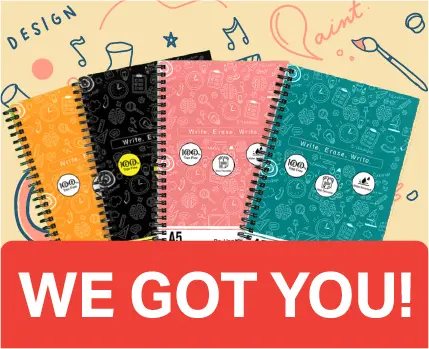If you have been searching for note-taking methods, then you have already heard of the Cornell Method, Mind Maps, or the famous outline technique. We have tried and tested these methods and have recognized them as efficient means of taking notes during class or study sessions. They provide a well-defined framework for organising concepts, information, and arguments.
But even if they are great, which they are, you might be sick and tired of hearing of those three. So in this blog, we will cover note-taking methods usually which no one talks about. There are also incredible ways to organise information and ideas without resorting to the traditional note-taking methods.
Below are the three note-takings methods:
If you are dealing with factually dense subjects, this note-taking technique is an excellent choice as it serves as an alternative to flashcards. It encourages active recall after your lectures or when preparing for assessments. You can adapt it according to your class by employing facts, topics, or questions.

To do this, simply divide the page in half, write the name of the topic or question that needs to be answered on the left side of the page, and provide the corresponding definition or response on the right column. You can also make it interesting by folding the page to make it more challenging, and quizzing yourself on these topics.
The Q/E/C note-taking method is a technique used to take effective notes during lectures, discussions, or when reading academic texts. Q/E/C stands for Question, Evidence and Conclusion.
Educators designed this note-taking strategy to help students organize their thoughts, summarize information, and improve comprehension.

Here’s how the Q/E/C note-taking method works:
Cal Newport came up with the idea for the Morse code way of taking notes, which focuses mostly on utilising written materials.If you come across a sentence that appears to be outlining a main idea, you should mark it in the margin with a dot. If you then come across an example or explanation that supports that main idea, you should mark it in the margin with a dash.
This enables you to continue reading without breaking the momentum and take the notes easily. The process of taking the dots you’ve written and turning them into notes is known as the processing stage. It essentially requires you to summarize the main idea into your own words in a bullet point. Then, you can take all these points and review them in the format of questions: “What is the main question being asked in the article?” and “What is the conclusion the author points towards?”
Now as we have given you the three best note-taking methods, all you need to do is start executing it on your NARA Smart Reusable notebook. Unlike regular notebooks, once your reusable notebook is full, all you need to do is scan the page with any mobile application and upload it on the cloud. Now with a wet damp cloth just wipe the page, you get a completely new page at your disposal everytime.
These best note-taking methods will not only help you understand the concepts you are learning, but will also help you revise and revisit the contents when exams are around. We hope this secret note-taking methods blog was worth your while and you start implementing it in your study routine from today itself.
You can also read our previous blog on how to track habits like a pro and make your life much more disciplined and organised.
A :
B-7, Hema Industrial Estate Near Meghwadi, Jogeshwari East, Mumbai 400 060 Maharashtra, India
